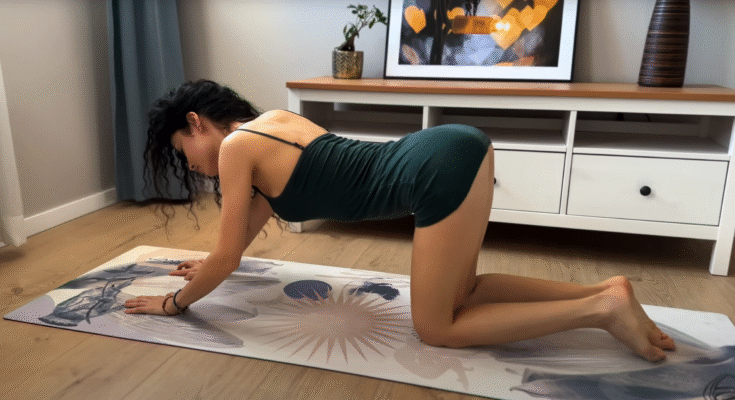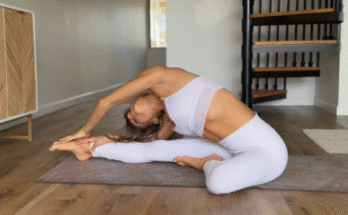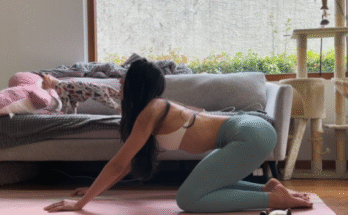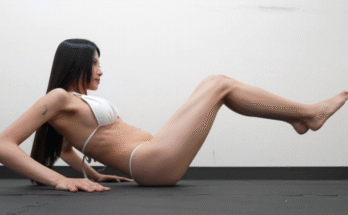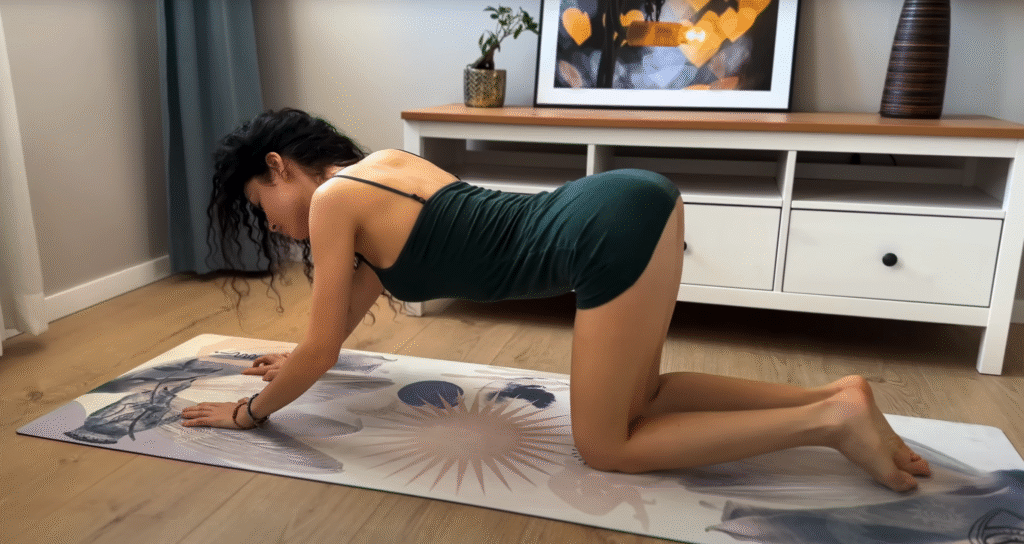
In a world that constantly moves faster — filled with screens, noise, and endless tasks — finding moments of stillness can feel like a luxury. Yet, our bodies and minds crave it more than ever. Stretching for relaxation and calming isn’t just about flexibility; it’s about creating space within yourself. It’s a way to release physical tension, slow racing thoughts, and reconnect to the rhythm of your breath. When you stretch with mindfulness, every motion becomes a gentle reminder to let go, breathe, and be fully present.
Imagine this: soft lighting, a quiet room, maybe the faint scent of lavender in the air. You take off your shoes, step onto your mat, and allow your body to unwind. Each stretch becomes a doorway to peace — a way to calm the mind and ease the stress of daily life.
Let’s walk through a 1,000-word journey into the beauty and serenity of stretching for relaxation and calming — how it feels, what it does for you, and how you can make it part of your life.
1. The Power of Stretching Beyond the Physical
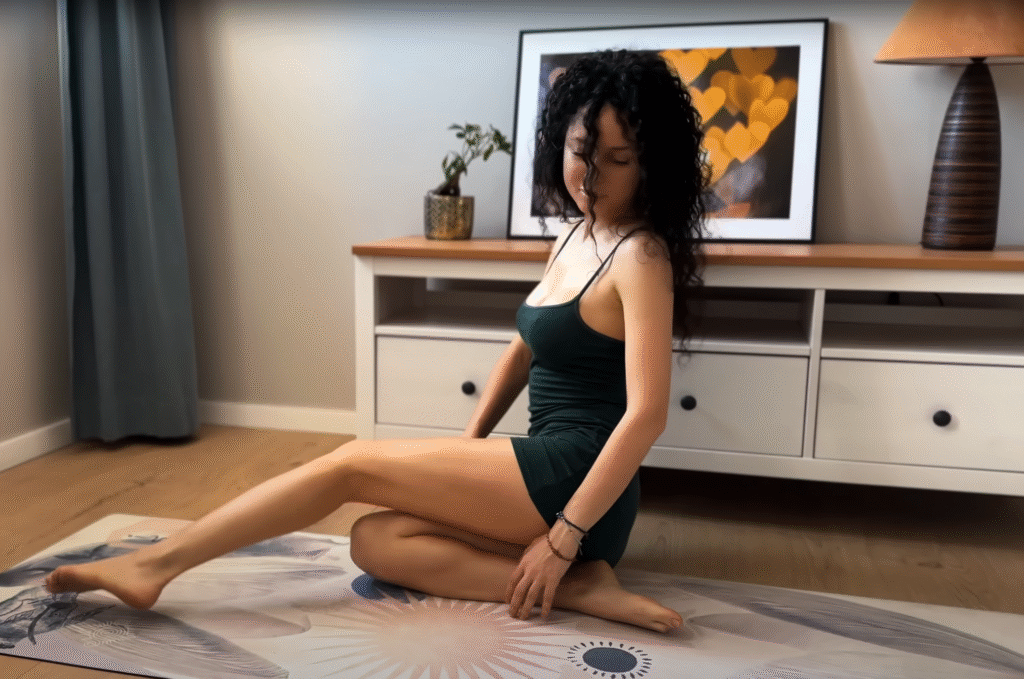
Stretching is often associated with fitness routines — a quick warm-up before a workout or a cool-down after exercise. But when done slowly and consciously, it transforms into something deeper. Each movement, each breath, invites the nervous system to relax.
When you stretch gently, you stimulate the parasympathetic nervous system — the “rest and digest” mode. This response slows the heart rate, lowers blood pressure, and helps your body exit the fight-or-flight state that stress often triggers. As your muscles lengthen, your mind begins to soften too.
Stretching can become a form of meditation. It doesn’t require silence or stillness; it only requires attention. The tension you feel in your shoulders or hips isn’t just physical — it’s where emotions, worries, and fatigue accumulate. By breathing into those areas and letting go, you release more than tight muscles — you release emotional weight.
2. Preparing for a Relaxing Stretch Routine
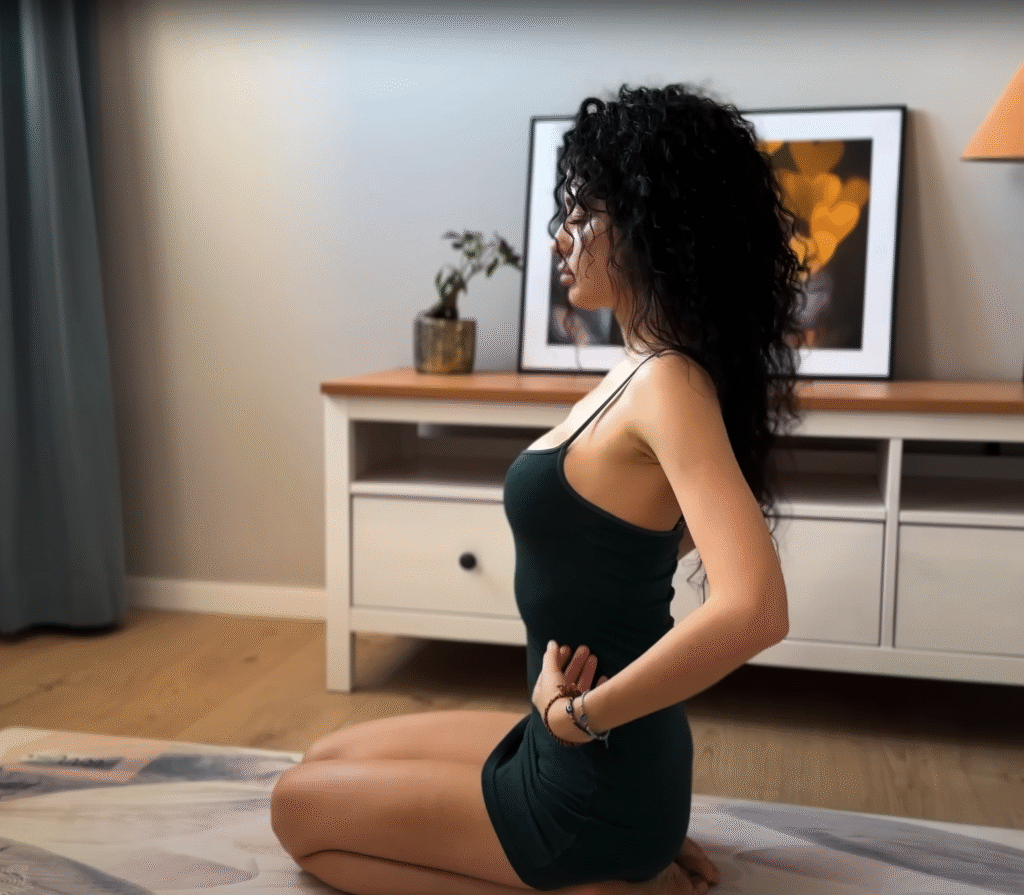
To get the most calming effect, you don’t need to be in a yoga studio or gym. You can stretch anywhere: in your living room, on your bed, or even on the grass outside. The key is to create an atmosphere of peace.
Setting the mood:
Dim the lights or open your curtains for soft, natural light. Put on calming music — something instrumental, perhaps soft piano or ocean waves. If you have essential oils, diffuse lavender, sandalwood, or chamomile for relaxation.
Your mindset:
Let go of performance or goals. You’re not here to become more flexible — you’re here to unwind. Move slowly. Breathe deeply. Notice how your body feels without judgment.
3. Gentle Full-Body Stretch Routine for Calm
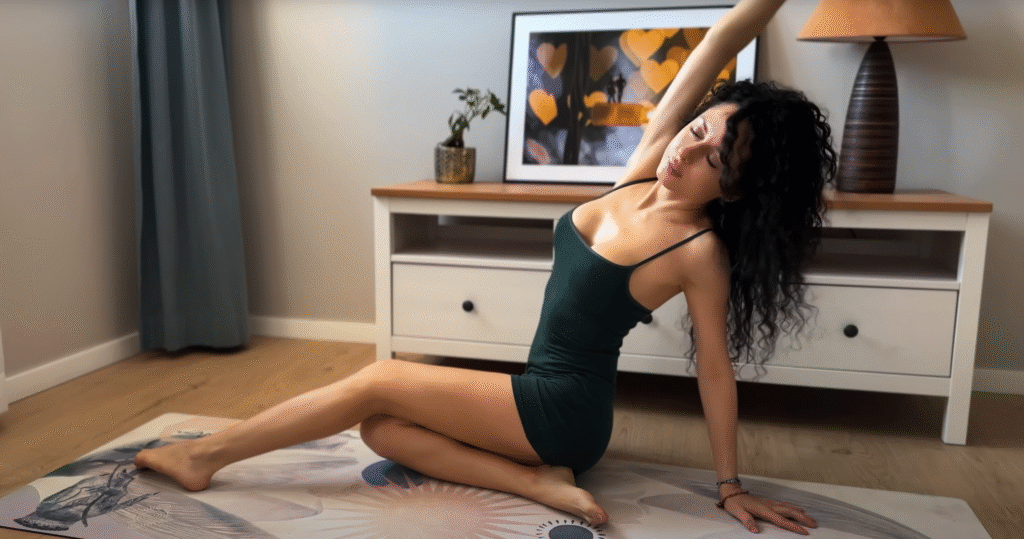
Here’s a simple and soothing sequence you can follow anytime you need peace — morning, after work, or before bed.
1. Deep Breathing & Neck Release
Sit cross-legged or in a comfortable chair. Place your hands on your thighs, close your eyes, and take a few deep breaths. Inhale through your nose, hold for a second, and exhale through your mouth.
Now, gently tilt your head toward your right shoulder, feeling the stretch along the left side of your neck. Breathe into it for 20 seconds, then switch sides. These small movements signal your body that it’s safe to relax.
2. Shoulder Rolls & Arm Stretch
Raise your shoulders toward your ears and roll them back in a smooth circle. Do this 10 times, then reverse direction. Extend one arm across your chest and use your opposite hand to hold it in place. Feel the gentle stretch in your shoulder and upper back. Repeat on the other side.
Shoulder tension is one of the most common results of stress. Releasing it can instantly make you feel lighter and calmer.
3. Standing Forward Fold
Stand tall with your feet hip-width apart. Inhale as you raise your arms overhead, then exhale as you fold forward from your hips. Let your head hang and your arms dangle toward the floor. Slightly bend your knees if needed.
Feel the gentle pull along your hamstrings, lower back, and spine. Stay here for 30 seconds, breathing slowly. Each exhale releases more tension down your spine.
4. Cat-Cow Stretch (for the spine)
Come to your hands and knees. On your inhale, drop your belly, lift your chest, and gaze up — this is Cow Pose. On your exhale, round your spine, tuck your chin, and pull your belly inward — Cat Pose.
Flow between these two poses with your breath for one minute. The movement loosens the back, improves circulation, and synchronizes your breathing with motion — a deeply calming rhythm.
5. Child’s Pose (for grounding)
From your hands and knees, bring your big toes together and spread your knees apart. Sit back onto your heels and stretch your arms forward, resting your forehead on the mat or floor.
Breathe deeply and imagine the floor supporting you completely. With every exhale, let your hips sink deeper. Stay for at least one minute. This pose soothes the nervous system, reduces anxiety, and promotes surrender.
6. Seated Forward Fold
Sit with your legs extended in front of you. Inhale and raise your arms, then exhale and hinge forward from your hips, reaching toward your toes. Don’t strain — it’s about length, not depth. Let your head drop and your back soften.
This stretch calms the mind and stretches the back and hamstrings. Close your eyes and breathe.
7. Supine Twist (for releasing tension)
Lie on your back and pull your right knee toward your chest. Gently guide it across your body toward the left side while extending your right arm out to the side. Look toward your right hand. Hold for 30 seconds, then switch sides.
The twist relaxes the spine and massages internal organs, promoting detoxification and stress relief.
8. Legs Up the Wall (for total calm)
Lie on your back near a wall and extend your legs upward, resting them against it. Keep your arms relaxed beside you, palms facing upward. Close your eyes and take slow, deep breaths.
This position improves blood flow, reduces swelling in the legs, and encourages deep relaxation. It’s one of the most soothing poses you can do — especially at the end of a long day.
9. Final Rest – Savasana
Lie flat on your back, legs comfortably apart, arms relaxed at your sides. Close your eyes. Let your breath return to its natural rhythm.
Scan your body from head to toe, releasing any remaining tension. Feel your body melt into the surface beneath you. Stay here for 3–5 minutes, simply breathing and existing in stillness.
4. The Mind-Body Connection
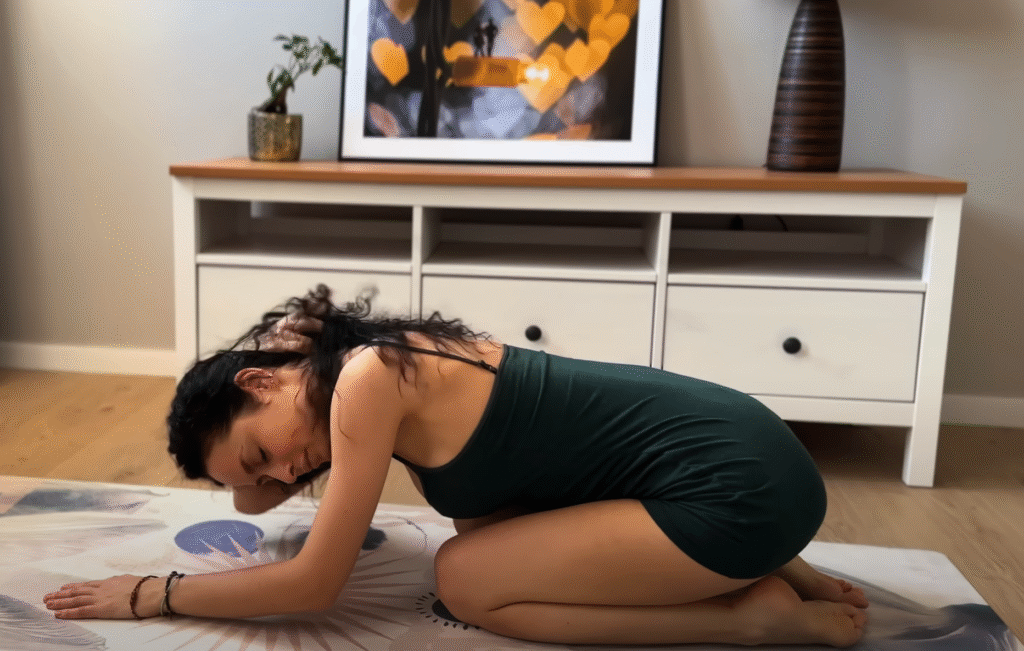
When you stretch with awareness, you’re doing more than loosening muscles — you’re retraining your nervous system to respond differently to stress. Each exhale tells your body, I’m safe. Each gentle movement reinforces the message that it’s okay to slow down.
Many people find that during a relaxing stretch session, emotions surface — sometimes sadness, sometimes relief, sometimes joy. That’s natural. Our bodies store experiences in muscle memory. When you finally release tightness in your hips, shoulders, or chest, you might also release the emotions that lived there. Allow it. Breathe through it. That’s healing in motion.
5. After the Stretch: Feeling the Calm
When you slowly rise from your final pose, don’t rush. Sit up, take a deep breath, and notice how you feel — lighter, calmer, more at ease. Your breath feels deeper, your shoulders softer, and your thoughts quieter.
Stretching for relaxation and calming is like pressing a reset button for your body and mind. You’re reminding yourself that peace doesn’t have to be complicated or far away. It’s right here, within your reach, waiting in each breath and movement.
Even five to ten minutes of gentle stretching daily can make a difference. Over time, your body will learn to relax more easily, and your mind will follow.
6. A Final Reflection
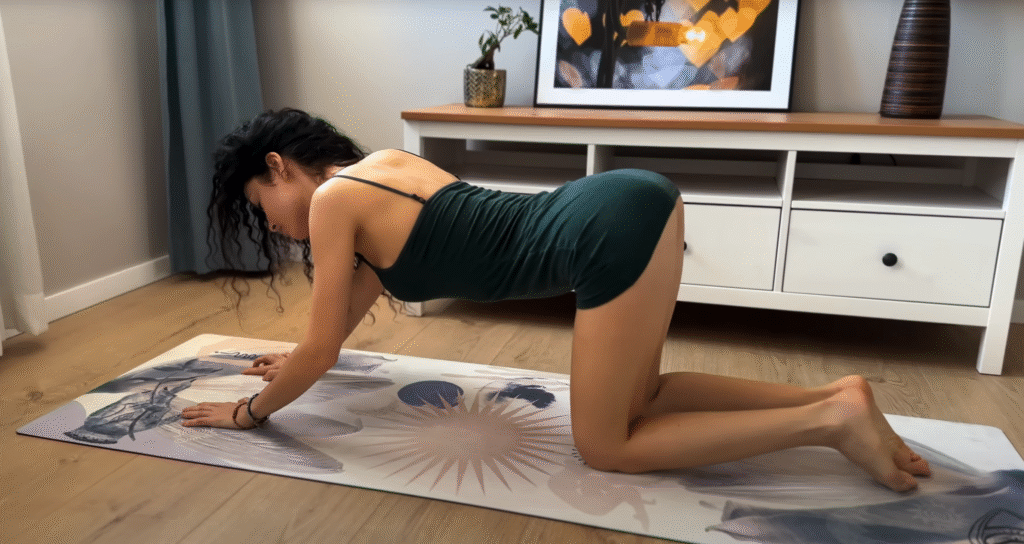
In a culture that celebrates speed and productivity, it takes courage to slow down. But your body deserves rest just as much as it deserves strength. Your mind deserves peace just as much as it deserves focus.
Stretching for relaxation and calming is not about effort — it’s about ease. It’s an act of kindness toward yourself, a soft whisper that says, You’ve done enough today. You can rest now.
So tonight, before bed, or tomorrow at sunrise, take a moment to stretch. Feel the air move through your lungs, the tension melt away, and the quiet fill your heart. Because relaxation isn’t just something you wait for — it’s something you create.
